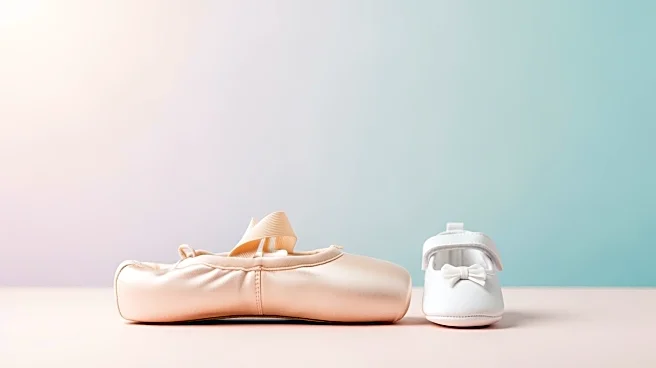What's Happening?
Misty Copeland, renowned for being the first Black woman to become a principal dancer at the American Ballet Theatre, is embarking on a new chapter in her life. After stepping away from the stage in 2020 due to physical strain, Copeland has returned to the spotlight
with a farewell performance. In 2022, she founded The Misty Copeland Foundation to create opportunities for children in ballet, particularly those who have not seen themselves represented on stage. That same year, she became a mother, which she describes as a transformative experience. Copeland's journey began in a Boys & Girls Club gym in Los Angeles, and she has since become a symbol of resilience and representation in the ballet world.
Why It's Important?
Misty Copeland's transition highlights significant issues in the arts, particularly regarding representation and accessibility in ballet. Her foundation aims to address the lack of diversity in ballet by providing pathways for underrepresented children. This initiative could inspire similar efforts across the arts, promoting inclusivity and diversity. Copeland's story also underscores the physical demands of ballet, as she navigates changes in her body post-pregnancy and injury. Her ability to adapt and continue contributing to the arts community serves as an inspiration to many, particularly young dancers of color who see her as a role model.
What's Next?
Copeland's foundation is expected to expand its reach, potentially influencing other arts organizations to prioritize diversity and inclusion. As she continues to advocate for representation in ballet, her efforts may lead to broader discussions and initiatives within the arts community. Additionally, Copeland's personal journey of adapting to physical changes may encourage other dancers to embrace their evolving bodies and redefine their careers beyond traditional performance roles.
Beyond the Headlines
Copeland's experience of painting her pointe shoes to match her skin tone highlights ongoing challenges of racial inclusivity in ballet. Her story brings attention to the subtle yet significant barriers faced by dancers of color, such as the lack of appropriate dancewear. By sharing her experiences, Copeland is not only advocating for change but also educating the public about the nuanced realities of being a minority in the arts.














